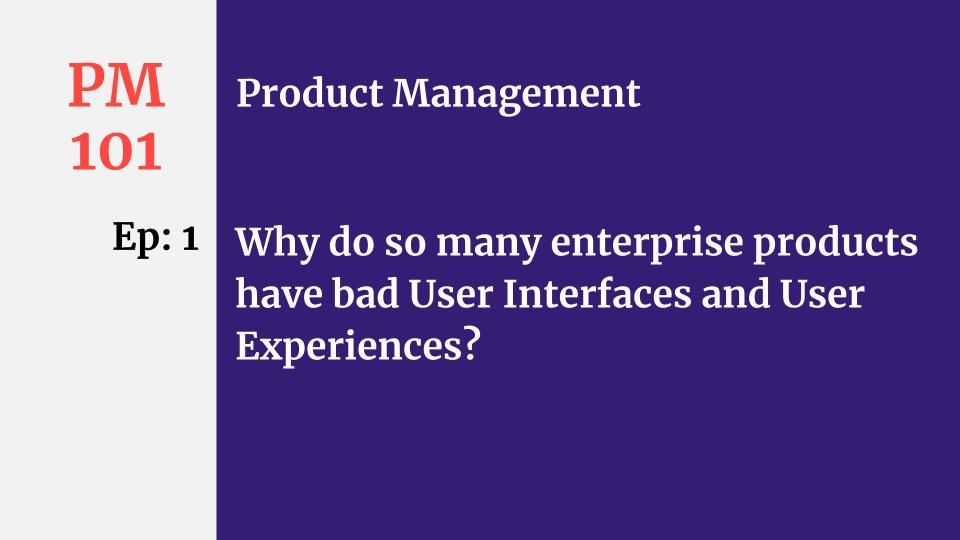PM: Ep #1: Why do so many enterprise products have bad User Interfaces and User Experiences?

Why there are so many badly designed enterprise products. And why it is often the case that the higher the price tag, the worse the product experience.
When companies sell large contracts worth hundreds of thousands and millions of dollars, the sales process includes many stakeholders in the decision process.
There are three main categories of people in the buying cycle:
1. End-users.
End-users are those who use your product on a daily basis. They will be operating your software.
2. Influencers.
Influencers are those who are not decision-makers or end-users but who have influence over the buying decision. For example, if an organization buys expensive and important software, the IT department needs to vet the product on the security front in order to understand where and how company and customer data will be protected.
3. Decision-Makers.
And finally, decision-makers are those who have the final word on buying decisions.
Let’s take CRM as an example. Sales reps and sales managers are end-users because they use CRM products the most. IT will influence buying decisions and ensure that the CRM is secure and fits the current infrastructure. And the CRO or VP of sales will be the final decision-maker even though they won’t use the CRM as often as sales reps.
In this situation, a software vendor has a high incentive to target decision-makers focusing on ROI, technical specs, and capabilities. Since decision-makers are not daily users, the sales process rarely involves a focus on UI/UX. Product and engineering teams are more focused on tech capabilities over UX/UI.
This is what I call the UX/UI Gap in enterprise products — it’s when the product design is lacking because those who make buying decisions are not the ones who use the product daily.
And this dynamic pushes software companies to focus on tech capabilities that drive ROI for decision-makers rather than on actual users of the product who experience bad UI/UX daily.
That’s why we’ve seen so many companies in the last decade approach the enterprise software market with a bottom-up approach — focusing on easy-to-use and well-designed products for end-users and forcing organization-wide adoption from the bottom. Examples include Slack, Dropbox, inVision, Figma, and many others.
So while it's important to provide tech capabilities and address decision-makers in your sales process, don’t forget that you are building products for end-users – who will be in it daily.
Let's look at a real-world example. Our PM Growth team at Barracuda was originally organized around Free Email Threat Scanner which was the primary demand-generation vehicle for our Email Protection Suite.
Our end-users are IT and security managers. So our signup flow and product value were built around the needs and requirements of our end-users. When IT managers signed up and completed the scan, we would send an email with a detailed overview of all threats we found.
As we collected more feedback from IT managers, we realized the need for a feature that would allow users to share this threat report. This would empower end-users to share the results of the scan with the decision-makers. So, we built functionality that allowed threat report sharing via web link or pdf.
The bottom line? We focused on UI/UX experience for end-users but also found a way to build product features to help decision-makers in the buying process.
Your primary goal as a product manager and GTM team is to focus on your end-user. Make their experience great and let them become champions of your product in their organization. Focusing on end-users will center your team around product experience for those who will be using your product daily.
Checkout my course on How to Conduct Customer Interviews
